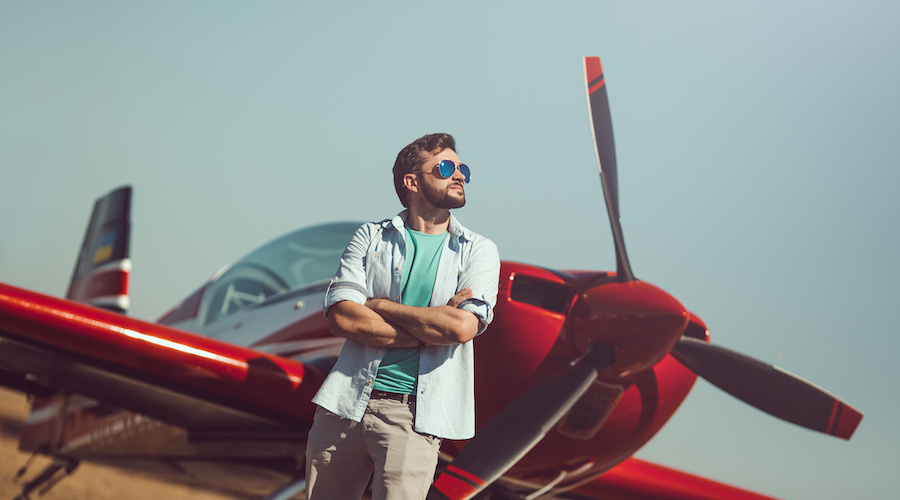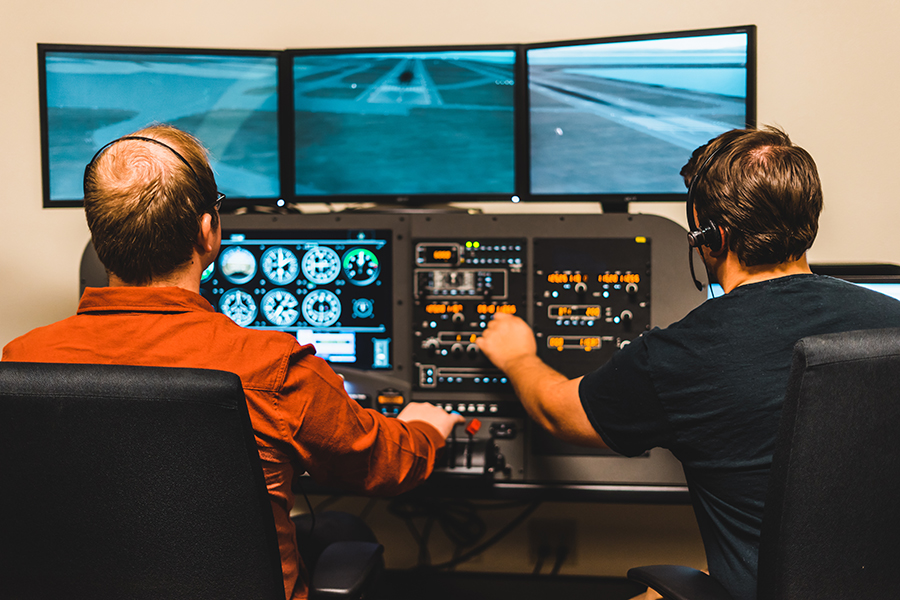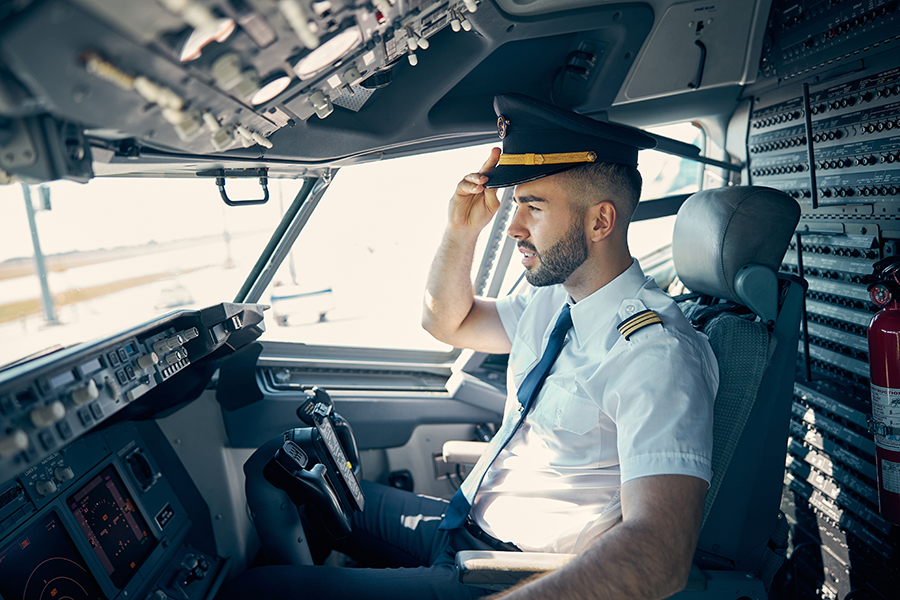The FAA introduced the Sport Pilot Certificate in late 2004 to encourage more people into aviation. Reduced training and medical requirements promised cheaper and faster access to recreational aviation. Seventeen years on, uptake of the opportunity has been modest. In 2019 the FAA issued 27,000 private pilot licenses against 200 sport pilot certificates.
Is there value to the aviation industry from the sport pilot certificate? First, we’ll review what’s required to gain a sport pilot certificate. Then we’ll discuss the privileges it offers. That done, we’ll be better placed to discuss its merits, or otherwise.
The Human Requirement
The minimum age limit for a sport pilot certificate is the same for a private pilot; you must be 17 years old, or 16 for gliders or balloons. As with all US pilot certificates, you must understand and communicate well in written and spoken English.
The medical requirements are where the sport pilot differs from other certificates. A valid driver’s license is all that serves as proof of medical competency, with the only stipulation being that the applicant has not been rejected for the prior issue of an airman medical certificate.
Flight experience times are half that of the private pilot certificate. You must evidence at least 20-hours of flight time. Fifteen of those hours are dual with a qualified flight instructor, and two must be cross-country. The other 5-hours must consist of solo flight.
Finally, you must pass a written examination and a practical flight test.
Equipment Privileges
The FAA uses a term to describe the aircraft it considers suitable for a sport pilot to operate. That term is ‘light and docile.’
The outcome of this term means a pilot may fly only those aircraft certificated as light-sport aircraft (LSA). However, an exception exists for older aircraft that meet the LSA weight and performance specifications.
The requirements for LSA state that an aircraft cannot be complex. Complex refers to retractable landing gear, twin engines, pressurization, or a constant speed propeller.
The total gross takeoff weight of an LSA must not exceed 1,320-pounds or 1,430 for seaplanes. Maximum speed limitations of 120 knots apply, with the stall speed not exceeding 45 knots. LSA aircraft can have a maximum of two seats.
Operational Restrictions
The sport pilot may fly only during daylight hours, with civil twilight being the official boundary of the day. They are permitted to carry one passenger. Height restricted, they must not fly above altitudes of 10,000-feet.
Flight is not permitted in B, C, or D airspace due to radio communication requirements. However, this limitation may be removed following communication training and endorsement by an instructor. The communication endorsement aside, the sport pilot is unable to add further ratings to their license.
Price Comparison
Pricing the different options for pilot certificates depends on many variables, including the part of the country you wish to learn, the aircraft you fly, and your ability to learn the required skills quickly. The following are average prices, which I believe give a realistic picture of actual costs.
At the time of writing, a Cessna Skycatcher 162 Light Sport with glass cockpit costs $145 per hour to rent, with instructor fees a further $77. Add in ground instruction costs and exam fees, and the sport pilot certificate will cost in the region of $5,900.
Pursuing a private pilot license in a Cessna 172 Skyhawk will cost $205 per hour to rent, with the same instructor fees as above. With ground instruction costs and rental fees, the private pilot license will cost approximately $15,000.
Two caveats apply to the prices above. You will find prices advertised at a cheaper rate, taking you through the minimum hours with minimum ground school. It is for the individual to decide the suitability and quality of the instruction.
The second point to consider is your ability to learn the required skills in the minimum time, depending on your capabilities and the frequency you fly. Some pilots may take ten hours longer to reach the required standard.
Is There Value In A Sport Pilot Certificate?
The FAA has constructed a pathway of ever-higher pilot certifications. With the proviso that all dual instruction is done with a certified flying instructor rather than a sport flight instructor, the flying time from one level counts toward the experience requirements of the next.
Starting with a student pilot certificate, you may take instruction. Having reached the minimum requirement for the issue of a sport pilot license and passed the exams, you may now fly with a friend or family member. Ten hours later, you are eligible to be tested for the recreational pilot’s license, removing some restrictions and permitting a range of endorsements. At 40-hours, you may test for the private pilot certificate. Beyond that lies further endorsements, complex airplanes, and commercial and airline transport pilot licenses.
Those who point to the slow uptake of the sports pilot certificate as a legislative failure are missing the point. We should applaud legislators who are open to careful change. The FAA would have been roundly criticized from another direction if the reduced sports pilot requirements had triggered an upturn in fatal accidents. Similarly, they would be accused of being old-fashioned and resistant to change if they stuck doggedly to the old licensing structure.
However, the introduction of the sport pilot certificate has been largely uneventful, which is as it should be. I have no doubt that many have looked at the license and chosen a different route. Yet, I believe the initiative will have introduced many to flying. Many who might otherwise have been excluded by cost or health.
The only truism in life is change, and so it will be with aviation legislation. Already changes are promulgated to lift current restrictions on LSA aircraft. We’ll see higher permissible airspeeds and greater horsepower, and we will likely see an increase in total gross takeoff weight.
Regarding certification, I believe we can expect similar modifications over time. The current overlap between the sport pilot and recreational pilot certificates is an obvious place to begin, and the addition of greater endorsements or aircraft types is another.
It’s worth restating that sport pilot flying hours count toward the experience requirements for higher certificates. An individual working toward sport pilot certification who chooses not to stop there but move to higher certificates is, I believe, a vindication of the sport pilot concept. It is certainly not an indictment.
Summary
I believe many look at the achievement of a private pilot certificate as an almost unattainable goal. Whether from cost, health, or time requirements, the hill seems too steep to climb. To those individuals, the sports pilot certificate offers a solution.
It provides a gentle introduction to aviation while individuals get to fly some of the most advanced light aircraft that exist today, sporting glass cockpits and full authority digital engine controls (FADEC). As a bonus, they get to take a friend or family member.
So, is it worth it? I believe the answer is a resounding yes, and kudos to the FAA and the aviation community for introducing, supporting, and guiding the initiative. If you’re looking at a low-cost, low medical introduction to flying, the sport pilot certificate is the way to go.

 @pilotinstituteairplanes
@pilotinstituteairplanes



